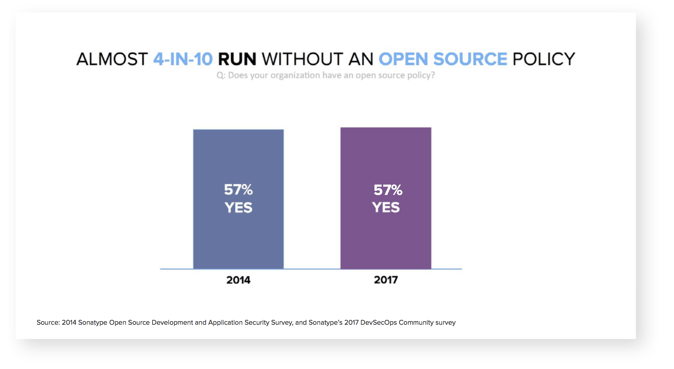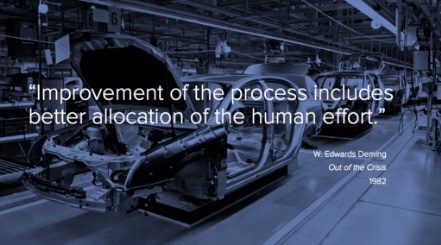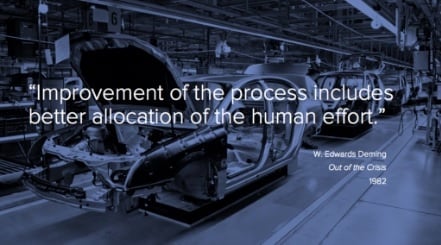You Are What You Eat.
When it comes to food, we all know what’s considered “good” and what’s “bad”.
For fried, battered, buttery or creamy: the category of cupcakes and such...just say no. When fresh, grilled, steamed or baked: of course, you should eat your veggies and other fine foods...bon appetite.
We can all understand this simple rule when eating. But for many, when it comes to software development, simple rules and advice from nutritional labels aren’t always there for us. Simple rules like, use “good” open source components, not “bad” ones (i.e., vulnerable, outdated, risky licenses) when building and deploying your next app.
Evidence of Gluttony.
To meet the need for speed, virtually all modern development organizations are using open source and third party components to assemble applications rather than build every function from scratch. According to the 2016 State of the Software Supply Chain report, the average development organization feasts on over 229,000 open source Java components each year, but we’re seeing similar consumption practices in the JavaScript, Python, Ruby, and .NET development realms. While the upside of this gluttony is improved productivity, there is a downside to consuming components without the proper insight into their quality.
Beyond the consumption of open source and third-party software components in development, the same guidance holds true for containers used by DevOps teams. Today, over 100,000 free apps are available on Docker Hub, and consumption of those applications into DevOps tool chains and infrastructure often go unchecked.
The Downside of Efficiency.
While sourcing components and containers can accelerate development efforts, many organizations do not apply sufficient scrutiny to assessing their quality or security. The 2016 Software Supply Chain report also indicates that 1 in 15 of the components used in applications contain at least one known security vulnerability. What this means is that not all components and containers are created equal. It also means that blind consumption practices can have both immediate and long-term consequences for the organization consuming the open source software components or containerized applications.
According to the 2017 DevSecOps Community survey, 57% of organizations looking to improve the quality of components used in their development practices have implemented an open source governance practice. This is up only slightly from the 2014 survey which showed 57% of organizations with open source policies in place. For those without a policy, there are no rules in place when it comes to “good” vs. “bad” consumption practices. Having policies in place can help to improve the quality of applications being produced, reduce vulnerabilities to attack, and eliminate use of components with risky license types.

Breaking Bad.
To further emphasize the need for evaluating component quality and security, let’s take a look at one of the findings from our 2014 survey. At the time, over 2,700 survey participants indicated that more than 1 in 10 organizations (14%) had experienced or suspected a breach in their applications related to an open source software component. Because, that survey took place in the same month that the notorious OpenSSL software component (a.k.a“Heartbleed”) vulnerability was announced, I felt like it might have inflated the number of breach related responses. To my surprise, the 2017 survey shows that 20% of organizations (1 in 5) had or suspected a breach related to open source software components in their applications. In the past three years, as the rate of confirmed or suspected breaches related to vulnerable open source components increased by 50%, the number of organizations having rules in place to govern the use of secure components remained the same.

Across the DevOps community, we are seeing much more attention being paid to security concerns and more organizations finding news ways to automate practices early in the SDLC. Automating the evaluation of open source and third party components against rules designated in open source governance policies is one the approaches being adopted. While not the only answer to DevSecOps requirements, having an automated policy in place to enforce governance and guide remediation can pay off handsomely if it also helps prevent a breach.
When it comes to carrots and cupcakes, the right choices can offer great short- and long-term benefits. In the realm of components and containers, making “good” choices will also benefit your DevSecOps practice.
Want to learn more about DevSecOps?
This blog is one of seven in a series providing expert commentary and analysis on the results from Sonatype’s 2017 DevSecOps Community Survey. For access to all of the blogs in this series and the survey report, please visit: www.Sonatype.com/2017survey.
This blog first appeared on DEVOPSdigest on March 21st.




